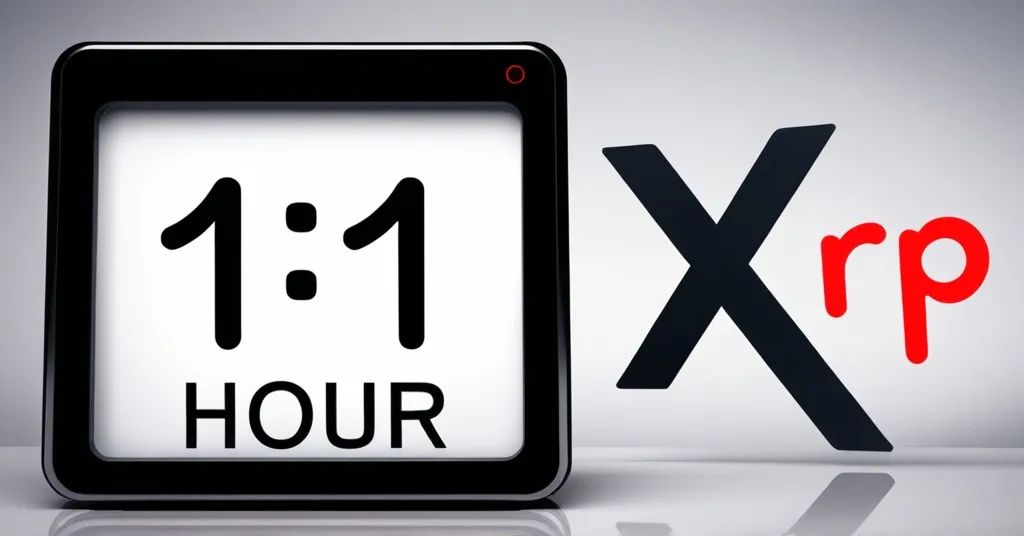XRP Ledger Recovers After Hour-Long Halt: Unraveling the February 5, 2025 Incident

XRP Ledger Bounces Back After Brief Halt: A Closer Look at the Incident
On February 5, 2025, the XRP Ledger experienced a temporary halt in transaction validation, disrupting operations for about an hour. RippleX confirmed the network’s resumption, but the exact cause of the disruption remains unclear. Despite this, XRP’s price held steady at around $2.50, demonstrating market resilience.
- Disruption on February 5, 2025
- Network halt lasted about an hour
- Cause unclear; validators stopped publishing confirmations
- XRP price stable at around $2.50
The incident began when validators, the backbone of the XRP Ledger responsible for confirming transactions, ceased publishing confirmations despite the consensus mechanism functioning normally. David Schwartz, Ripple’s Chief Technology Officer, provided insight, suggesting that servers may have paused to avoid mistakes, preventing incorrect ledger acceptance. This cautious approach reflects the network’s built-in safeguards, designed to protect against potential errors, much like a digital safety net.
Interestingly, only one validator operator took action during the disruption, leaving uncertainty about whether this intervention or the network’s inherent self-healing capabilities resolved the issue. This echoes a similar brief outage in November 2024, which lasted about 10 minutes and prompted Ripple to recommend an upgrade to Rippled 2.3.0 for enhanced network stability. It’s a reminder that even the most robust systems can falter, but they also have the capacity to recover, like a digital phoenix rising from the ashes.
Despite the hiccup, XRP’s price remained remarkably stable, hovering around $2.50 with a mere 4% fluctuation over the last 24 hours. This resilience is a testament to the confidence investors have in the XRP Ledger, even in the face of unexpected disruptions. It’s like watching a tightrope walker regain balance after a wobble – impressive and nerve-wracking.
The XRP Ledger plays a crucial role in the cryptocurrency ecosystem, designed for fast and low-cost international payments. Its reliability is essential for real-world adoption. These disruptions, while unsettling, highlight the ongoing efforts to strengthen the network. Schwartz’s transparency on social media platforms reflects Ripple’s commitment to openness and swift resolution, vital in the fast-evolving blockchain space.
Validators are the unsung heroes of the XRP Ledger, tirelessly working to maintain consensus and validate transactions. Their performance directly impacts the network’s stability, and incidents like these underscore their critical role. It’s like a symphony orchestra – each instrument must play its part perfectly, or the entire performance can be thrown off.
The XRP Ledger’s design, which includes the potential for self-healing, showcases the network’s resilience. It’s a reminder that in decentralized systems, there’s a balance between human intervention and algorithmic recovery. While the exact cause of the disruption remains a mystery, the network’s ability to bounce back quickly is a testament to its robustness.
The crypto world is no stranger to disruptions, but it’s the response and recovery that truly matter. Ripple’s recommendation to upgrade to Rippled 2.3.0 following the November 2024 outage shows a proactive approach to enhancing network stability. It’s like updating your antivirus software – you hope you never need it, but you’re glad it’s there just in case.
The XRP Ledger’s journey is a microcosm of the broader blockchain and cryptocurrency landscape. It’s a world where innovation meets challenge, where decentralization and community involvement play pivotal roles in shaping the future of finance. As we move forward, the lessons learned from these disruptions will only make the network stronger, more reliable, and more ready to take on the financial revolution.
Key Takeaways and Questions
- What caused the XRP Ledger disruption on February 5, 2025?
The exact cause remains unclear, but validators stopped publishing confirmations despite the consensus mechanism working correctly. David Schwartz suggested servers may have paused to avoid mistakes.
- How was the XRP Ledger disruption resolved?
It’s uncertain whether the action of one validator operator or the network’s self-healing mechanism resolved the issue, but the network resumed operations after about an hour.
- Were any ledgers affected by the disruption?
No, David Schwartz confirmed that no ledgers that received majority validation were lost or affected in any way.
- What recommendations were made to prevent future disruptions?
Following a previous outage, Ripple recommended that validators and node operators upgrade to Rippled 2.3.0 to enhance network stability.
- How did the XRP price react to the disruption?
The XRP price remained relatively stable, trading at approximately $2.50, with a 4% change over the last 24 hours.
“Validators had stopped publishing confirmations despite the consensus mechanism functioning normally.” – David Schwartz
“Servers may have deliberately withheld validations to prevent incorrect ledger acceptance.” – David Schwartz
“Only one operator took action, but it was still not entirely clear if that solved the problem or the network self-healed.” – David Schwartz
“No ledgers that received majority validation were lost or affected in any way.” – David Schwartz



